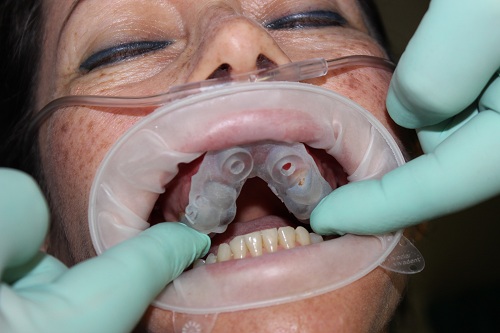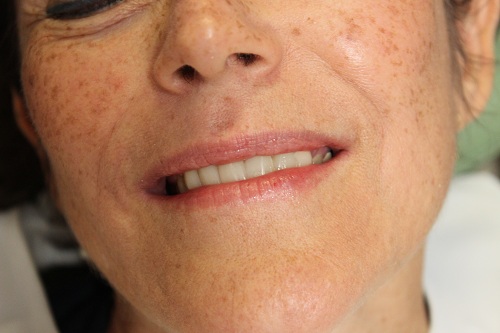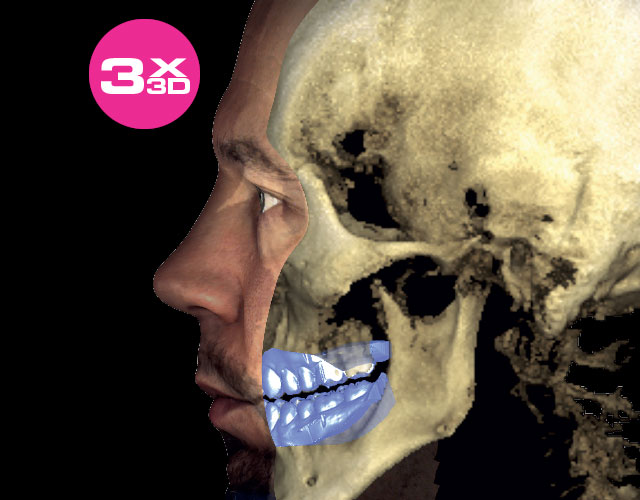Dr. Roberto Sosa is one of the most prominent odontologists and maxillofacial surgeons in the Yucatan. His dental clinic, CODY, is equipped with state-of-the-art technology that rivals most dental labs and surgeries in the U.S., Canada or other countries in Europe. Dr. Sosa’s clinic provides an integral service, going from diagnostics to implantology and prosthetics, all at the same medical facility.
The Yucatan Times reporter arrived at 7 am at CODY, and Dr. Sosa was already waiting in a meeting room with a big smile and offering a cup of coffee.
TYT: Thank you very much for your time Doctor Sosa, it’s a pleasure to meet you and we are here today to talk about Implantology and Dental Medical Tourism In Yucatan.
DR SOSA: I would like to start by saying that in this clinic we have equipment that patients won’t find in any other dental clinic in all of Latin America.
We design surgical guides and print them in a 3D printer. The accuracy we manage when we place an implant is very high.
I have been working in this field for decades now. I have been to other Mexican cities such as Tijuana, Mexicali, Ciudad Juarez, Monterrey, Cancun, Playa del Carmen, Pachuca and Mexico City among others, giving lectures and conferences on Implantology, and basically spreading the word in regard to this extraordinary system.
I also founded the College of Implantology of Yucatan, now known as Southeast College of Implantology, and I preside on the regional association of implantologists.
Many years back, I had a vision of the bright future that implantology was going to have in modern times, and dedicated a great deal of time studying and updating myself in all aspects of this discipline, and I have been a pioneer and a missionary in all of Mexico, trying to make the use of dental implants more popular, and trying to eliminate the use of dental bridges, since that kind of treatment damages other dental pieces that are in good shape, and that is counterproductive for the patient’s health.
So that is why implantology has consolidated at a world level, and not too long ago we had the vist of Mr. Luis Cabezas, who is representative of the Canadian government, who is in charge of the certification of medical clinics worldwide. He found out about us, he was kind enough to pay us a visit, and now we are in process of get certified by the Canada’s Minister of Health, and soon we will be approved by the Canadian government to receive people from that country, and specially now that we count with a new direct flight from Toronto, which is a big hub for all of Canada.
I would dare to say that we are the clinic with the best infrastructure in all of Mexico to take care of dental implants, because besides the surgical guides, and the tomographs, we have a unique digital dental laboratory, where we can have the capability of attending a dental implant in a matter of 24 hours, and you won’t find that kind of service anywhere else in Mexico or Latin America; and probably in just a few places in the U.S. and Canada. And of course, this is something very attractive for Dental Medical Tourism travelers.
What is the reality with Dental Medical Tourism? People is not going to travel all the way from the U.S. or Canada if a tooth aches, but they will come for an integral implantology procedure, planning their trip in advanced, and making reservations for their dental treatment and their vacation as well.
There is a growing group of Canadian “snowbirds” that usually spend 5 or 6 months in Mérida every year, that are our patients and schedule their appointment with us two times a year, each and every year.
But I have to highlight that the most important thing about Dental Medical Tourism, is not only the great difference in price, but the fact that we can provide a high quality service that equals or exceeds the service providers in their home countries.
We not only use the best and most renown implant brands worlwide (such as the Swiss made Straumann implants), but we also feature first world state-of-the-art technology equipment, excellent time of response and personalized service.
Swiss company Straumann is the biggest implant factory in the world, with presence in more than 85 countries, and the only one that provides a lifetime warranty for their implants. And just to give you an example, we charge $1,500 USD to place a Straumann implant, and in the States, the minimum price you will get for exactly the same procedure using the same product is $5,000 USD.
Why is that? Well, the difference is basically the hand labor price; in the U.S. all fees are significantly higher.
DR SOSA: I would like to add that, the Medical vocation in Yucatan goes all the way back to our Maya ancestors. Yucatan is and has been for hundreds of years, the Medical hub for all Southeast Mexico.
When I studied my specialty in Mexico City many years ago, I encountered Yucatecan doctors in charge of a wide variety of specialties in all the main hospitals of the capital city.
And if Yucatan has such an advanced Medical infrastructure and historic background, how come the government had not promoted Dental Medical Tourism before? Well, I do not have an answer to that question, but what I know is that the State Government is now doing an extraordinary unprecedented effort to boost this type of tourism as a source of income for the state.
Through the Secretariat of Tourism Promotion presided by Mr. Saul Ancona Salazar, and obviously with support from the governor and the Minister of Health, Dental Medical Tourism is being promoted as never before.
I believe that this adminstration is taking this industry seriously. In other countries such as Costa Rica or República Dominicana the government has been supporting this activity for years now, and they have been able to develop a big part of their economy based on this sector.
CODY was founded 32 years ago, and it has been an inspiration for generations of dentists, odonthologists and maxilofacial surgeons. And something that makes me very proud is that now we have good local competition, and that raises the level of service in our field statewide.
This competitors do not have the 3D printers and the tomographs we do, but they can make use of our equipment , because we also provide that kind of service to our colleagues.
TYT: At 8 am sharp, Dr. Sosa said good bye, because his first patient of the day was in the waiting room already; he kindly shook this reporter’s hand and left through the door of the meeting room.
Afterwards, Andrea Coronel, Dr. Sosa’s assistant and the person in charge of the clinic’s marketing and public relations, gave me a tour around the facility, where I could witness the high quality work performed by the different working teams.
3D imaging
The centerpiece of CODY’s technological equipment is the Planmeca ProMax 3D Imaging system with the ProFace accessory, an all-in-one CBCT (Cone Beam Computed Tomography) unit that includes 3D imaging, 3D photo, digital 2D panoramics and cephalometry.
With a single 14-second scan, Planmeca ProMax creates a full 3D computer model of the patient’s head which can be stripped, layer by layer, to reveal the musculature, skull, jawbone, and teeth.
The model is accurate to one millionth of a meter, allowing the technician to create a cast of the patient’s dentition without the use of traditional plaster-like dental casts. The 3D information is simply transferred to the lab’s 3D printer, which “prints” an accurate model of the patient’s teeth and gums in about 30 minutes.
Implants in 24 hours
The standard procedure for implants mostly involves waiting, sometimes for weeks, before the final fitting. In most places, a temporary piece is fitted, while the lab works on the final product. But with Dr. Sosa’s laser milling apparatus, a full crown can be milled in six minutes, to an accuracy of 25 microns (a micron is a millionth of a meter).
While the patient relaxes on the dental chair (also state-of-the-art), the lab technician creates the crown, then uses the “printed” model for fitting. When the fit is perfect, the new implant is put into place in the patient’s mouth.
In the meantime, Dr. Sosa’s team is working on manufacturing the implant on their 3D printers. And 24 hours after walking into CODY, the patient walks out with a brand new implant.
Interview by Alejandro Azcárate for TYT













